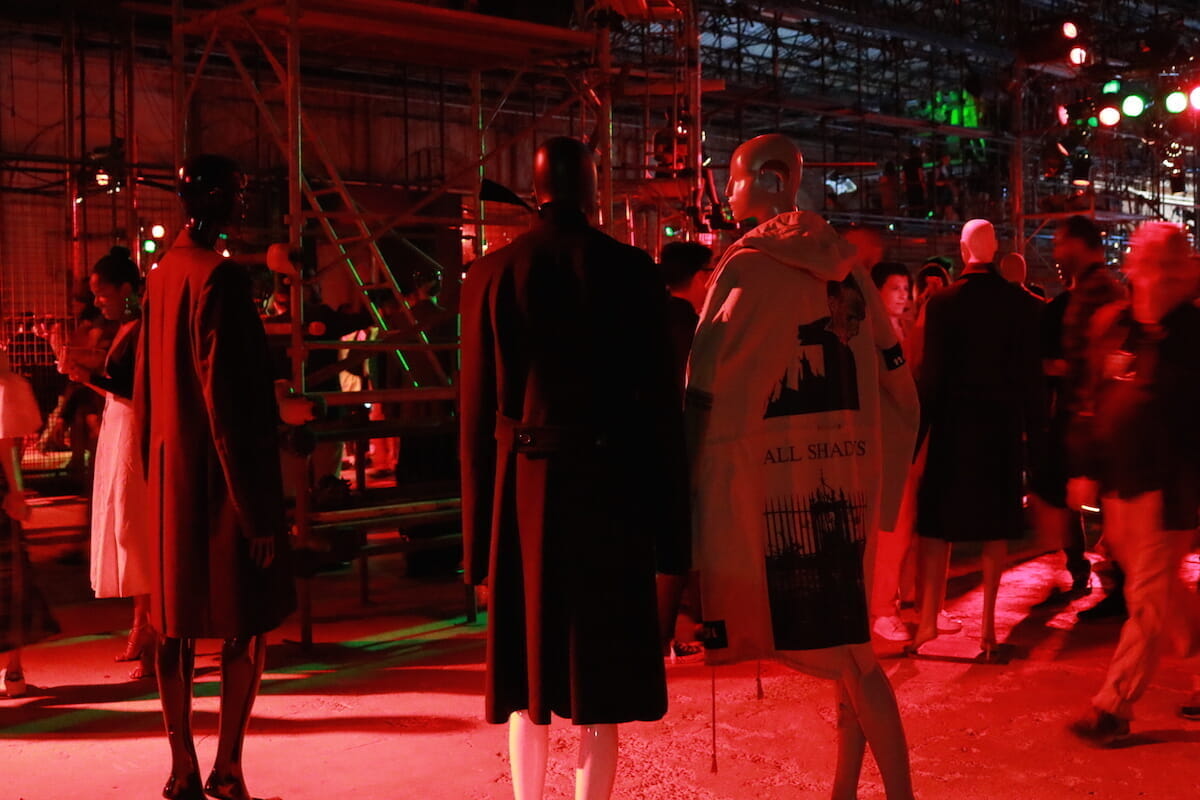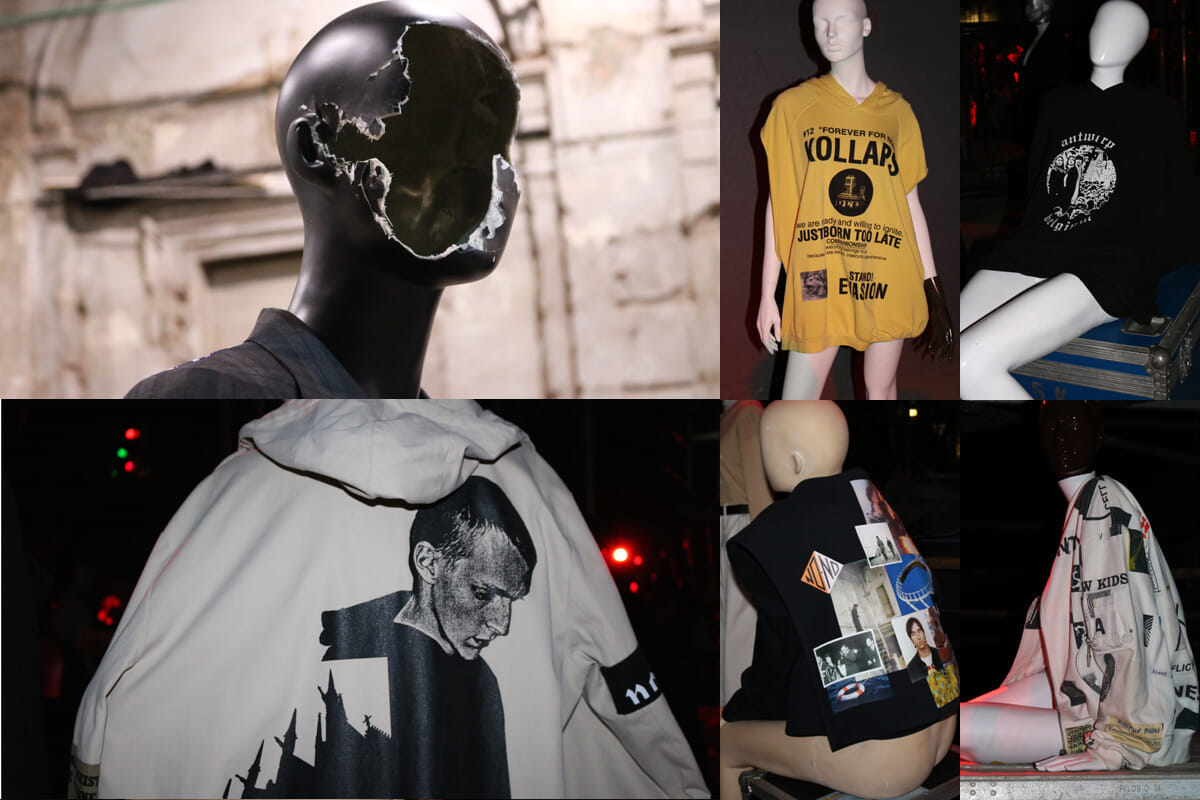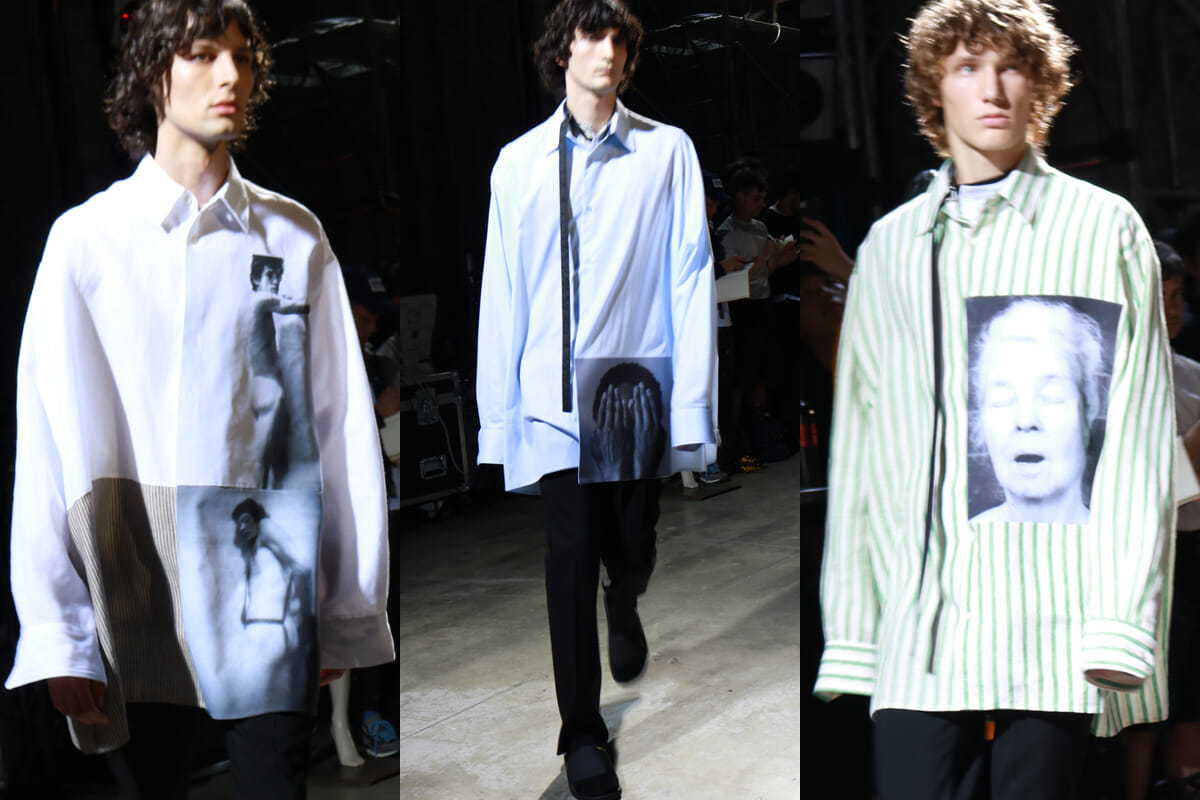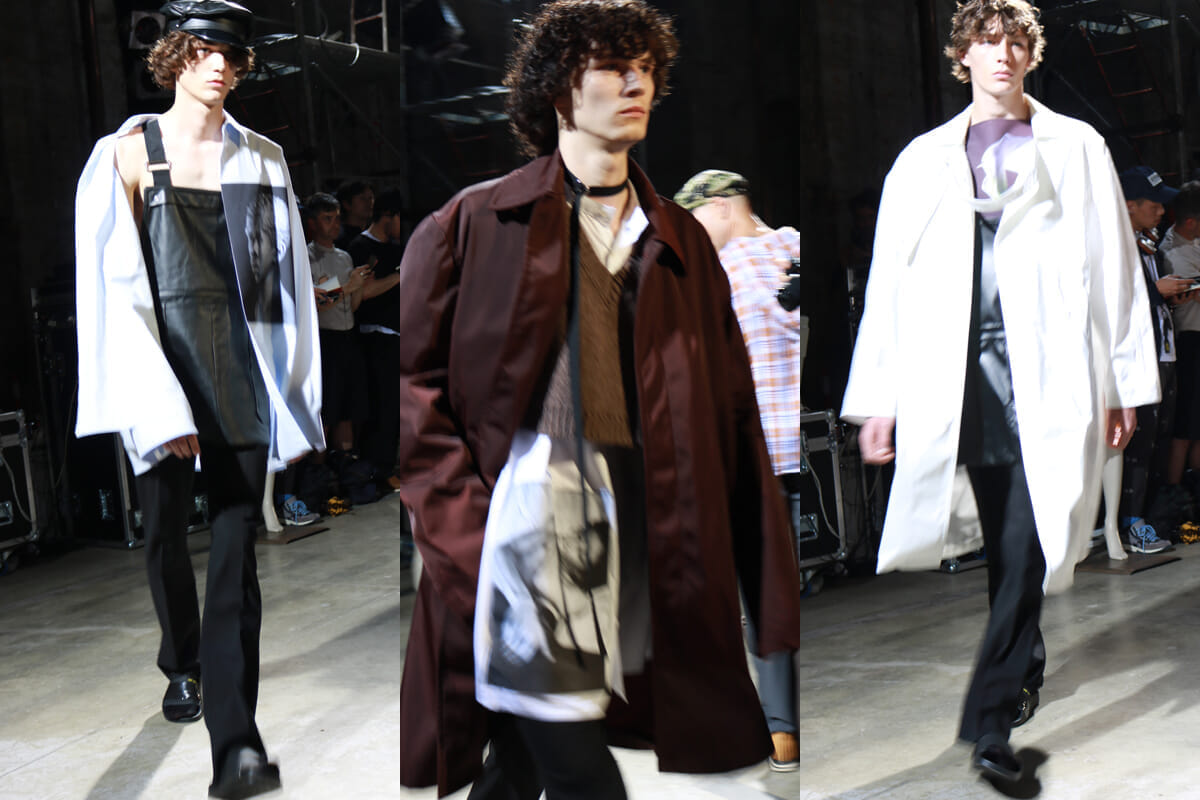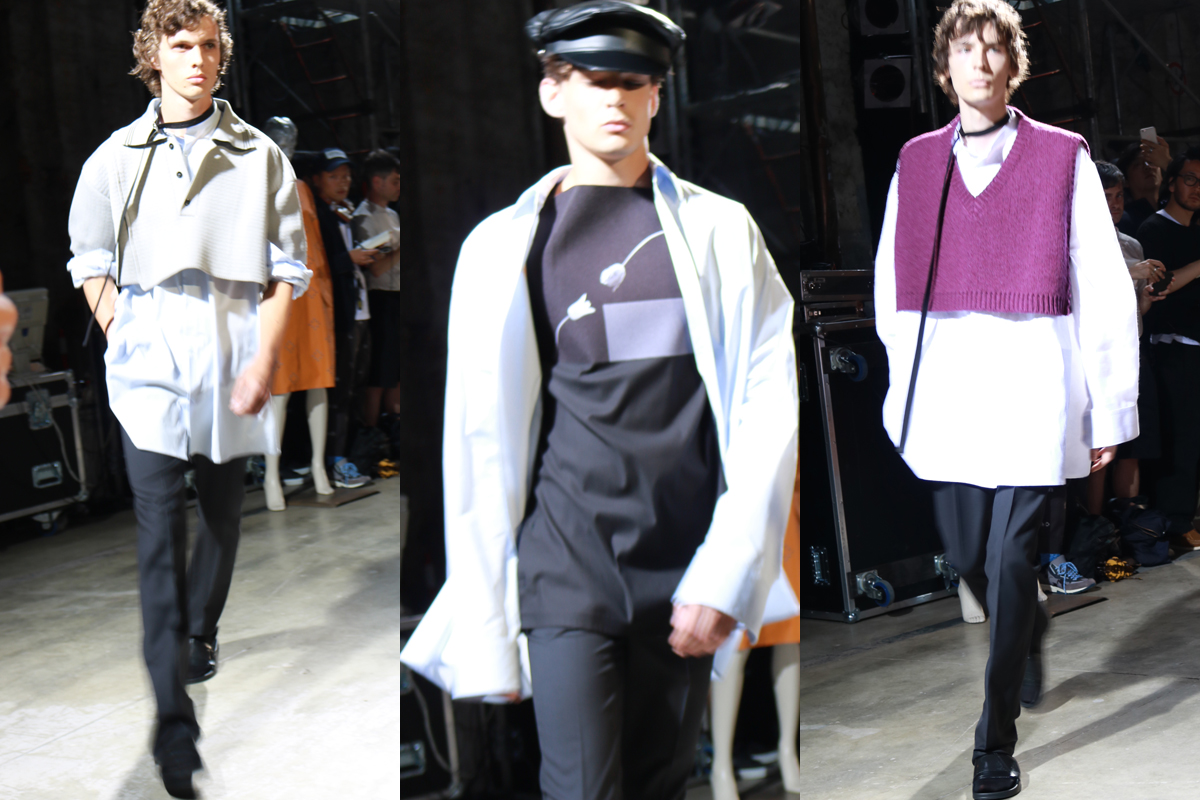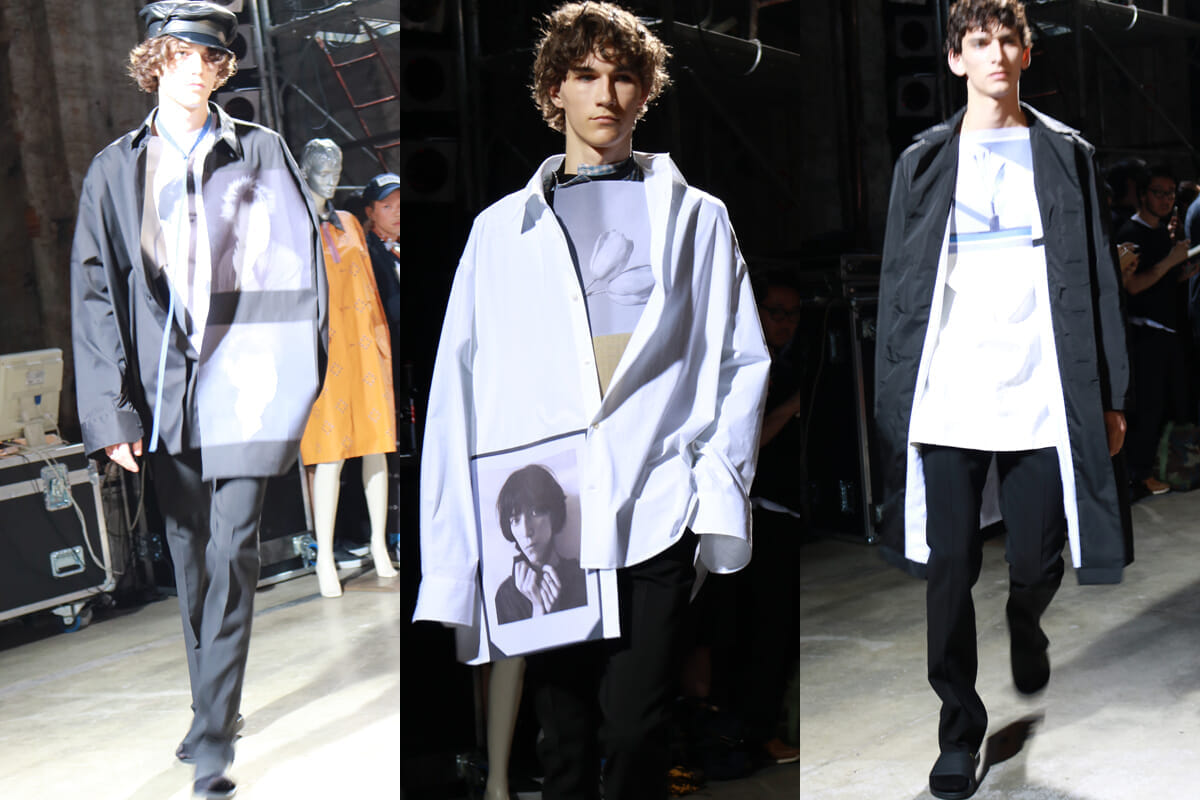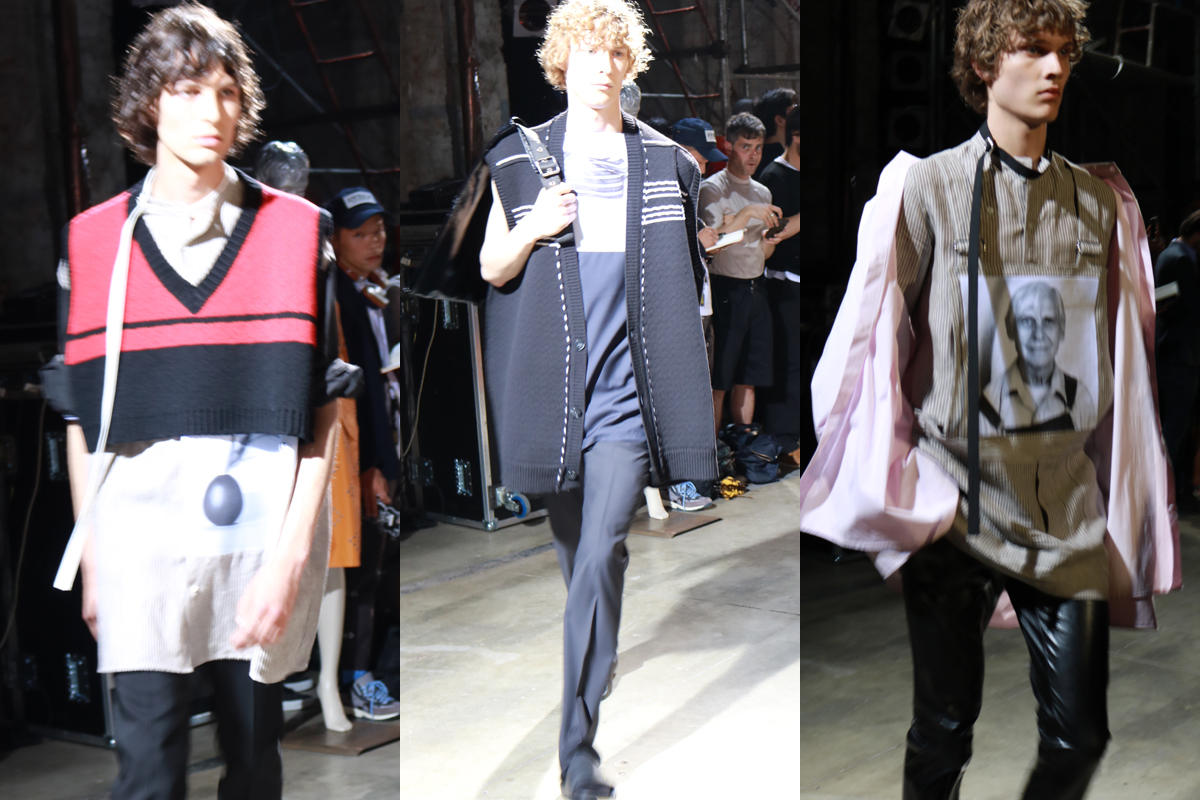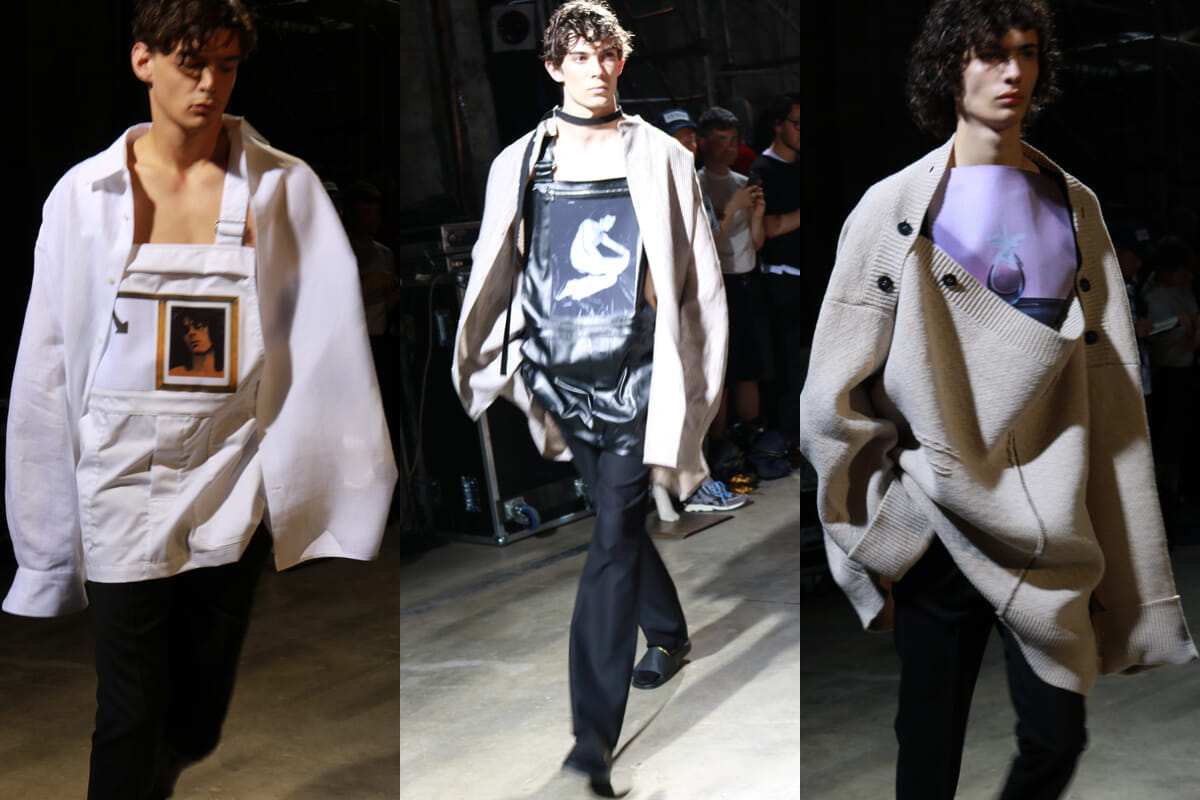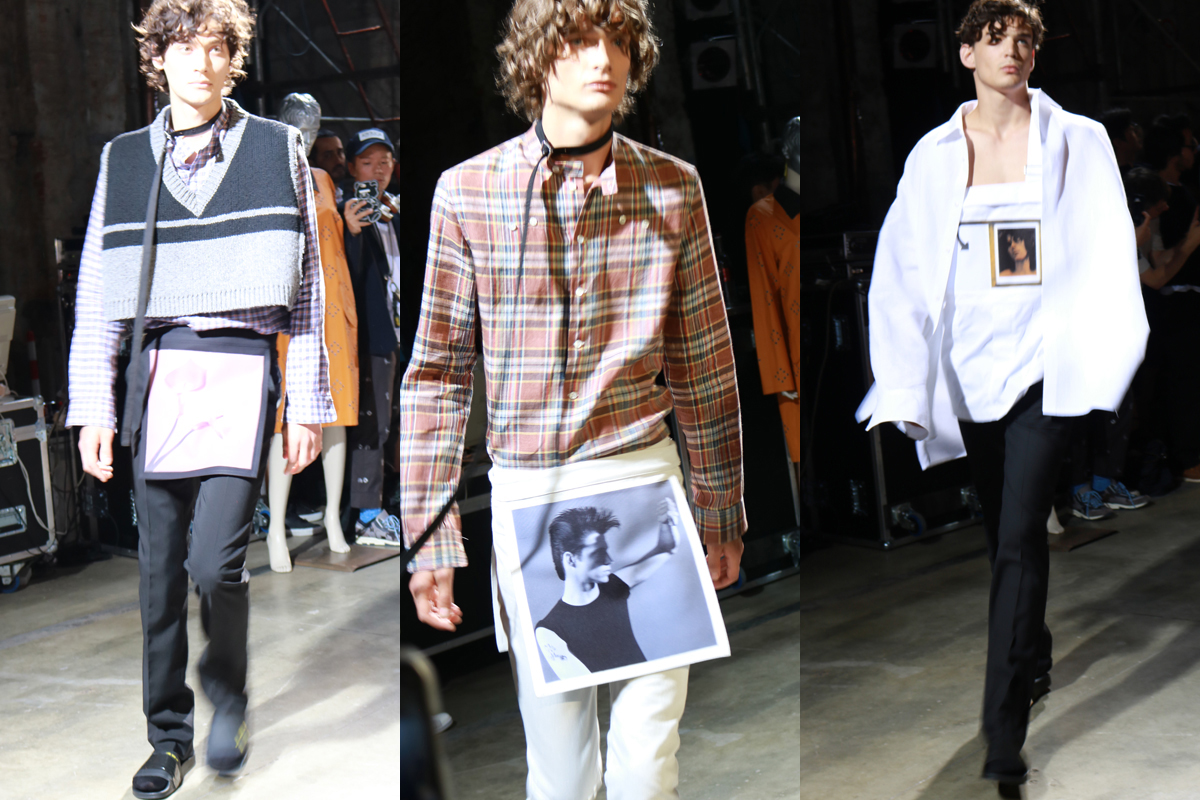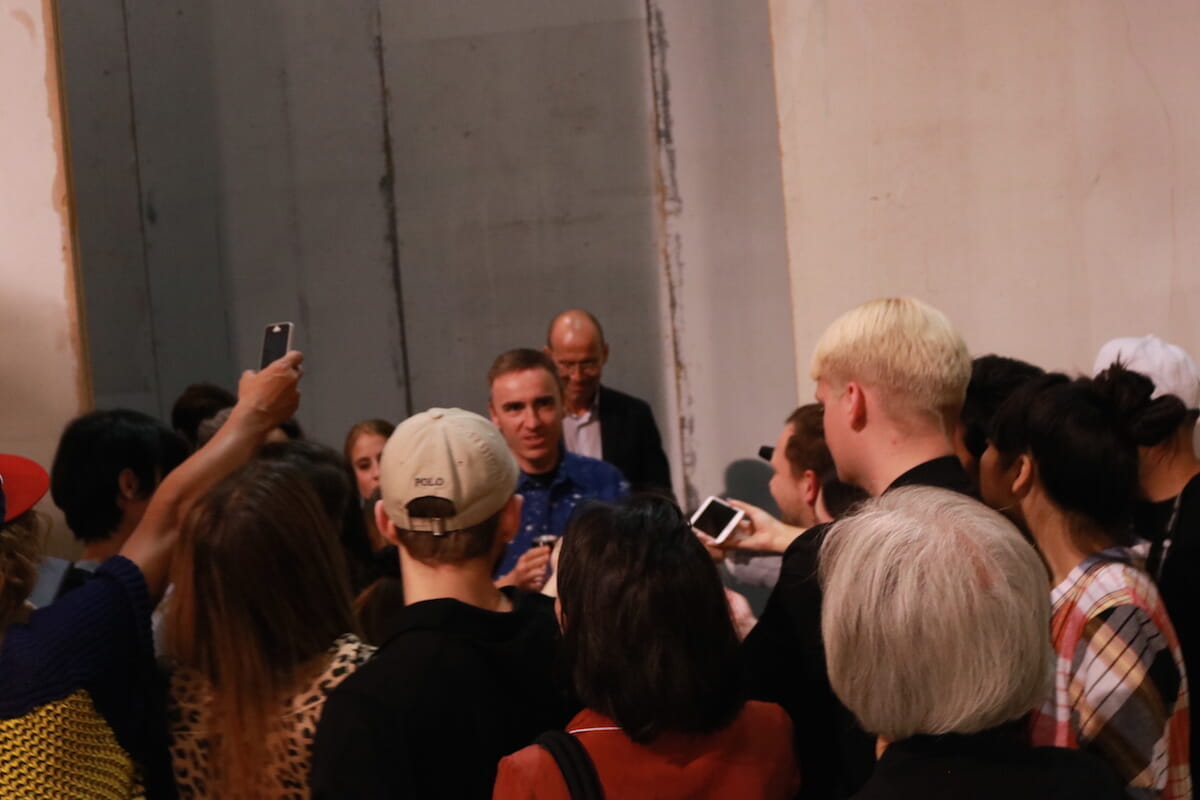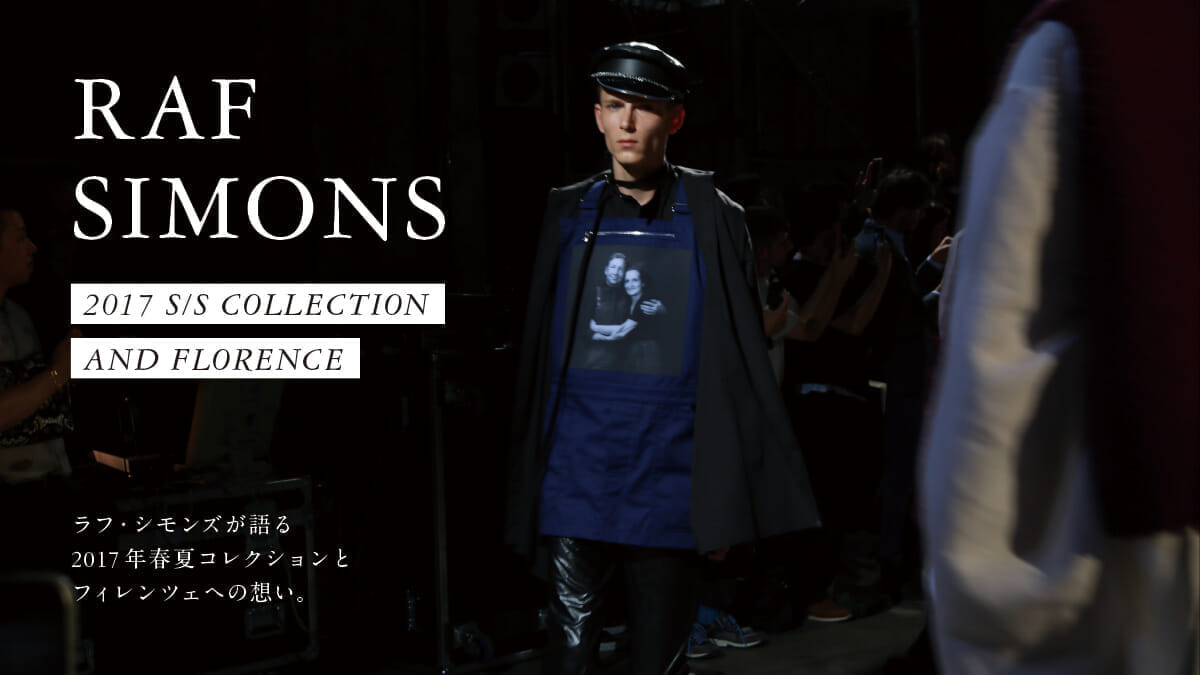
Raf Simons talks about his Spring/Summer 2017 collection and his thoughts on Florence.
Pitti Immagine Uomo is held every January and June in Florence, Italy. In recent years, as many as 1,200 brands have exhibited at this men's ready-to-wear trade fair, which attracts more than 20,000 buyers from Japan and abroad. HOUYHNHNM had the privilege of covering the 90th edition of the show since its inception. We will report on this event at a later date, but in this feature, we will first introduce "FLORENCE CALLING : RAF SIMONS," which drew much attention as the main event.
- Photo_HOUYHNHNM
- Edit_Ryo Muramatsu


